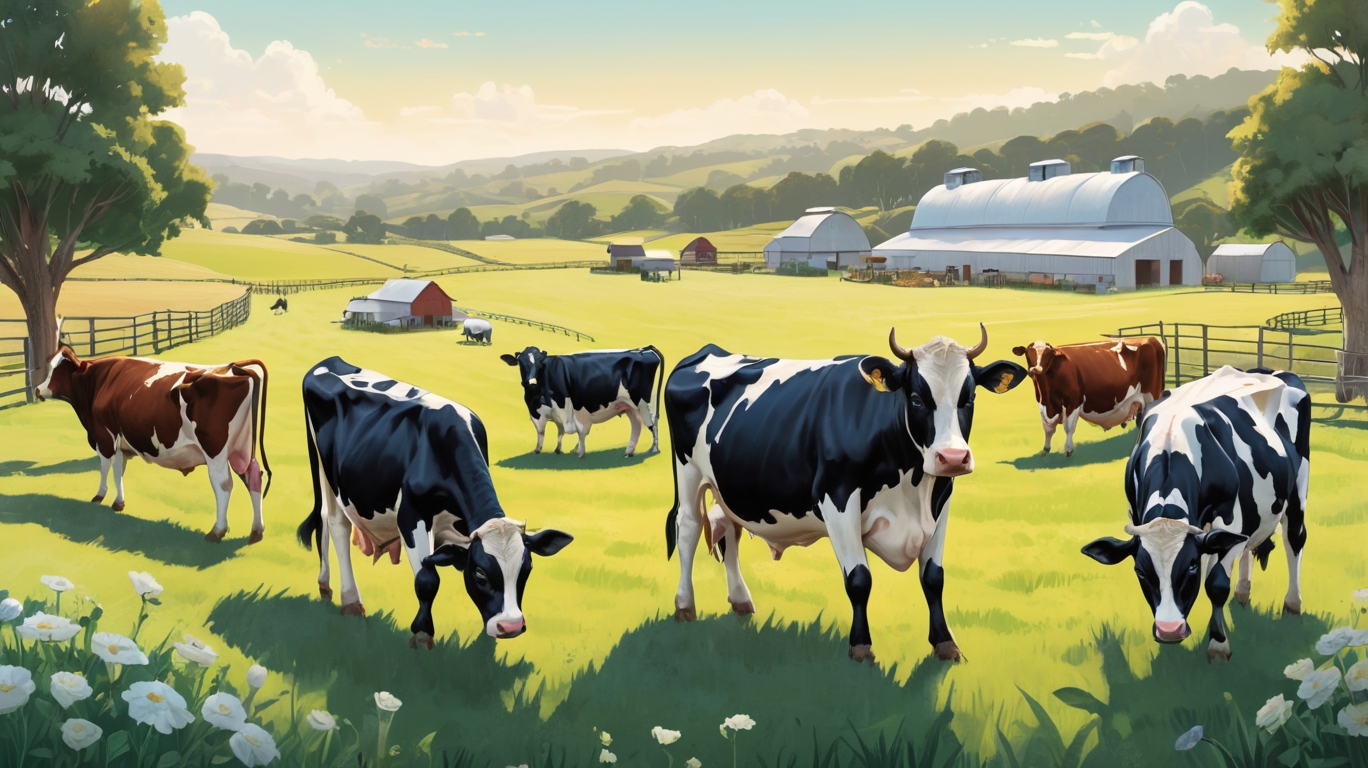Dairy Farming Best Practices: A Gentle Approach to Sustainable Farming
Dairy farming is more than just a livelihood—it’s a delicate balance of animal care, environmental stewardship, and efficient production. Whether you’re a seasoned farmer or just starting, adopting best practices ensures the well-being of your herd, the quality of your milk, and the sustainability of your farm.
In this article, we’ll explore some key practices that promote healthy cows, efficient operations, and a thriving dairy farm—all while maintaining a calm and mindful approach.

1. Prioritizing Animal Welfare
Happy, healthy cows produce better milk. Here’s how to ensure their well-being:
- Comfortable Housing: Provide clean, well-ventilated barns with soft bedding to prevent stress and injuries.
- Nutritious Feed: A balanced diet of high-quality forage, grains, and supplements keeps cows energetic and productive.
- Regular Health Checks: Work with a veterinarian to monitor herd health, vaccinate on schedule, and address illnesses early.
- Gentle Handling: Low-stress handling techniques reduce anxiety and improve milk yield.
2. Sustainable Grazing and Feeding
A well-managed pasture system benefits both cows and the environment:
- Rotational Grazing: Moving cows between pastures prevents overgrazing and promotes grass regrowth.
- Precision Feeding: Adjust feed rations based on each cow’s lactation stage to minimize waste and optimize nutrition.
- Water Accessibility: Clean, fresh water should always be available to support digestion and milk production.
3. Efficient Milking Practices
Consistency and hygiene are key to high-quality milk:
- Clean Milking Parlors: Sanitize equipment before and after each use to prevent contamination.
- Regular Milking Schedule: Cows thrive on routine, so stick to consistent milking times.
- Monitor Milk Quality: Test for somatic cell counts and bacteria levels to ensure top-grade milk.
4. Environmental Stewardship
Dairy farming can coexist harmoniously with nature:
- Manure Management: Composting or using manure as fertilizer reduces waste and enriches soil.
- Energy Efficiency: Consider renewable energy sources like solar panels to power farm operations.
- Water Conservation: Implement rainwater harvesting and efficient irrigation to reduce water usage.
5. Continuous Learning and Adaptation
Farming is an evolving practice—stay informed and open to improvement:
- Attend Workshops & Training: Keep up with the latest in dairy science and sustainable farming.
- Record Keeping: Track milk production, health records, and expenses to make informed decisions.
- Community Engagement: Share knowledge with fellow farmers and learn from their experiences.
Final Thoughts
Dairy farming, when done mindfully, is a rewarding journey that nurtures animals, land, and communities. By focusing on gentle animal care, sustainable practices, and continuous learning, you can build a dairy farm that thrives for generations.
What best practices have worked for your farm? Share your thoughts in the comments—we’d love to hear from you!